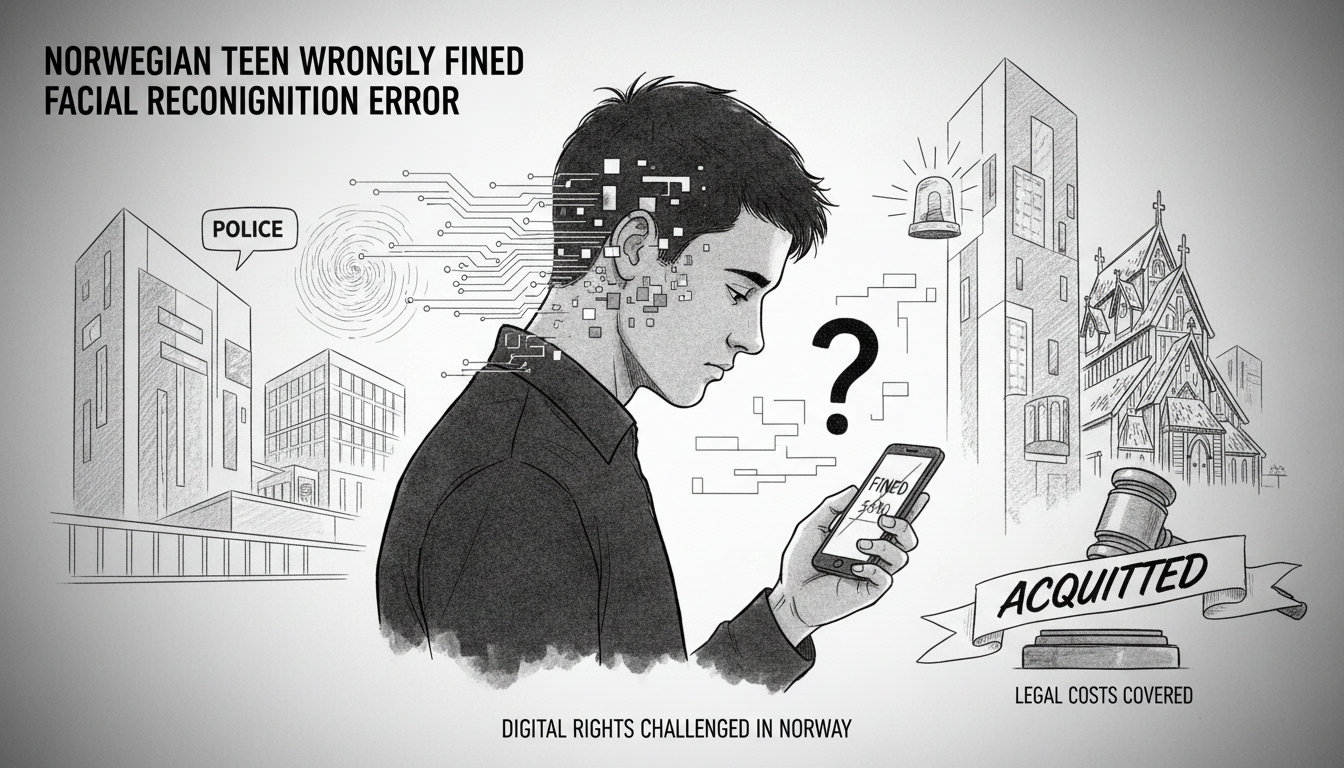An 18-year-old from Oslo successfully challenged a police speeding ticket after authorities mistakenly identified him using facial recognition technology. The case highlights growing concerns about automated law enforcement systems in Norway's digital transformation.
The teenager received a 20,000 kroner fine for allegedly driving 122 km/h in an 80 km/h zone on the E18 highway at Svartskog. Police claimed the photo from an automated speed camera matched his ID card photograph. He maintained his innocence from the beginning, telling officials he didn't even have a driver's license.
"It's not me in that picture," the young man stated. "I haven't done this. I wouldn't do something like that at 3 AM right before a school day anyway."
The rental car captured in the photograph couldn't be directly linked to him either. Despite this, police proceeded with the case, forcing the student to choose between paying a fine he knew was wrong or facing substantial legal costs.
His lawyer, Omar Tashakori, took the case pro bono after verifying the teenager's claims of innocence. They discovered several inconsistencies in the police evidence. The person in the speed camera photo wore glasses, while the accused teenager has perfect vision confirmed by an eye test.
"The prosecutor argued a hypothesis that my client wore non-prescription glasses to look smarter," Tashakori noted. "That's purely speculative thinking."
The defense team requested mobile location data that could prove the teenager's whereabouts that night. Police refused, claiming it wouldn't affect the guilt assessment. A district court judge initially supported this position, though teledata remains one of the most commonly used evidence types in Norwegian criminal cases.
Instead, the teenager used his phone's health app step counter to show he wasn't moving during the alleged offense. His lawyer questioned this reversal of proof requirements. "This concerns fundamental legal security principles. My client became responsible for proving he was innocent. How do you prove you were home sleeping?"
Further investigation revealed the phone number used to rent the Tesla belonged to another person connected to a separate incident years earlier. That individual confirmed police never contacted him about the current case.
The court eventually acquitted the teenager and unusually covered all legal fees totaling over 30,000 kroner, despite this not being standard procedure for such cases. Tashakori encountered five different police prosecutors during the proceedings, creating additional complexity.
This incident raises serious questions about Norway's increasing reliance on automated law enforcement systems. As Scandinavian countries accelerate their digital transformation, balancing technological efficiency with individual rights becomes crucial. The case demonstrates how facial recognition errors can create substantial personal and financial stress for innocent citizens.
Norwegian tech startups developing similar identification technologies should note the real-world consequences of imperfect systems. Oslo's innovation districts must prioritize accuracy and accountability alongside technological advancement. This situation shows that even in Norway's generally trusted legal system, technological tools require careful implementation and oversight.
The teenager's driving license plans remain on hold due to the case appearing in his records temporarily. His trust in police authority has been noticeably shaken by the experience, though he maintains faith in Norway's overall legal framework.
Legal experts suggest this case might prompt review of automated enforcement protocols across Nordic technology systems. As Scandinavian countries lead in government digitalization, ensuring proper safeguards against mistaken identifications becomes increasingly important for public trust.

